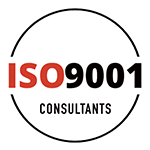ISO 9001 audits can seem daunting, but they don’t have to be. These audits are essential for ensuring that businesses meet quality management standards, helping them identify areas for improvement. Knowing what to expect and how to prepare is crucial to get through the process smoothly and efficiently.
Many organisations stumble during audits because of misunderstandings about requirements or simple oversights. Knowing beforehand where mistakes typically occur can make a big difference. By addressing common pitfalls, companies can enhance their compliance and focus on continual improvement.
Understanding the intricacies of an ISO 9001 audit is more than just ticking boxes. It’s about embracing a mindset of quality and accuracy. With the right preparation and approach, businesses can not only meet these standards but use them as a stepping stone for greater operational excellence.
Understanding Audit Requirements
Knowing the ISO 9001 audit criteria inside out is crucial for a successful audit. These criteria define the expectations for a quality management system, guiding businesses to meet standards effectively. Understanding these requirements allows organisations to align their processes and procedures correctly, ensuring that every aspect of their operations is up to standard. It also helps build a culture of quality that percolates at every level of the organisation.
One common mistake is underestimating the depth of these requirements. Businesses often think they can breeze through audits with scant preparation, overlooking the detailed checks involved. Another frequent error is misinterpretation. Some companies assume they understand the criteria, leading to gaps in compliance when the audit occurs. Recognising that ISO 9001 is not just about having processes in place, but also about ensuring those processes are effective, is key.
Another misconception is treating ISO 9001 requirements as static and tick-box requirements. The reality is that these criteria evolve and adapt. Therefore, periodic reviews and updates of documentation and processes are essential. Understanding these nuances can greatly reduce errors during audits and promote a seamless audit experience.
Preparing for the Audit Process
Preparation is essential for a stress-free audit. Taking the time to get everything in order can help avoid surprises and ensure a positive outcome. Here’s how you can prepare effectively:
– Review Documentation: Make sure all quality management documents are up-to-date. This includes procedures, policies, and records that demonstrate compliance with ISO 9001 standards.
– Conduct Internal Audits: These are like dress rehearsals for the real audit. Regular internal audits help identify gaps and areas for improvement, providing an opportunity to address issues in advance.
– Engage Employees: Everyone in the organisation should understand their role in the quality process. Engaging them through meetings or training sessions can ensure they’re ready to answer any questions an auditor might ask.
– Organise Records: Have all necessary evidence and records that are easily accessible. This shows readiness and transparency to the auditor, creating an efficient auditing process.
A frequent mistake is rushing the preparation phase, which can lead to missing documents or unprepared staff. This oversight can result in delays or negative findings. Another error is delegating the preparation to a single person or a small team, which can lead to gaps because of knowledge silos. A collaborative approach ensures that everyone is on the same page and contributes to a successful audit. Properly preparing sets the stage for a smoother audit and demonstrates a genuine commitment to quality management.
Engaging with Auditors
Interacting with auditors effectively is key to a successful audit. Clear and direct communication can help facilitate the process and ensure everything goes smoothly. It’s important to be open, honest, and cooperative. Auditors ask questions to understand processes better, not to catch you out. Providing accurate information and promptly addressing their questions shows transparency and readiness.
Here are some tips for engaging with auditors:
– Be Prepared: Have all necessary documents accessible and ensure key personnel are ready to answer questions related to their departments.
– Stay Calm and Organised: Stress and disorganisation can lead to communication breakdowns. Maintain a composed demeanour and follow a systematic approach.
– Clarify Doubts: If you are unsure about a question or requirement, ask the auditor for clarification. This prevents misinterpretations and ensures proper compliance.
Common mistakes include offering incomplete or false information, which can be detrimental during an audit. Attempts to hide errors often lead to larger issues down the line. Miscommunication, such as failing to tell all team members about the audit schedule, can also disrupt the process. Establishing open channels for dialogue and maintaining professionalism can avoid these pitfalls and create a supportive audit environment.
Implementing Corrective Actions
Addressing audit findings promptly is crucial for improvement and compliance. Ignoring these insights not only leads to repeated mistakes but can also erode trust with stakeholders. Corrective actions should stem from a willingness to improve quality management systems, ensuring continuous improvement and operational excellence.
Here’s how to implement effective corrective actions:
– Understand the Findings: Thoroughly review the audit report to grasp the issues identified and their implications for your organisation.
– Develop a Plan: Create a detailed action plan to address each finding. Assign responsibilities and set timelines for implementation.
– Monitor Progress: Keep track of the actions taken and evaluate their effectiveness. Use follow-up audits to confirm that corrective measures have resolved the issues.
Mistakes often occur when companies rush the implementation of corrective actions without proper planning or monitoring. This can result in ineffective solutions and recurring problems. By taking a structured approach to corrective actions, organisations can leverage audit findings as opportunities for growth and improvement, ultimately leading to enhanced business processes.
Conclusion
Navigating the complexity of ISO 9001 audits requires understanding, preparation, and effective communication. By familiarising themselves with the audit requirements and planning ahead, organisations can reduce errors and streamline the process. Engaging constructively with auditors encourages a smooth audit, while implementing corrective actions ensures that organisations continue to improve and uphold quality standards.
ISO 9001 audits are an ongoing journey rather than a one-time task. Adopting a proactive approach to audits helps businesses maintain a reputation for quality and reliability. Organisations that prioritise these practices prove their commitment to excellence over the long run.
Ready to elevate your organisation’s approach to ISO 9001 audits? Partner with ISO 9001 Consultants. Our team of experts is dedicated to guiding you through the complexities of audits and quality management. Whether you need help with training, auditing, or certification, we’re here to support your journey toward continuous improvement and excellence.







